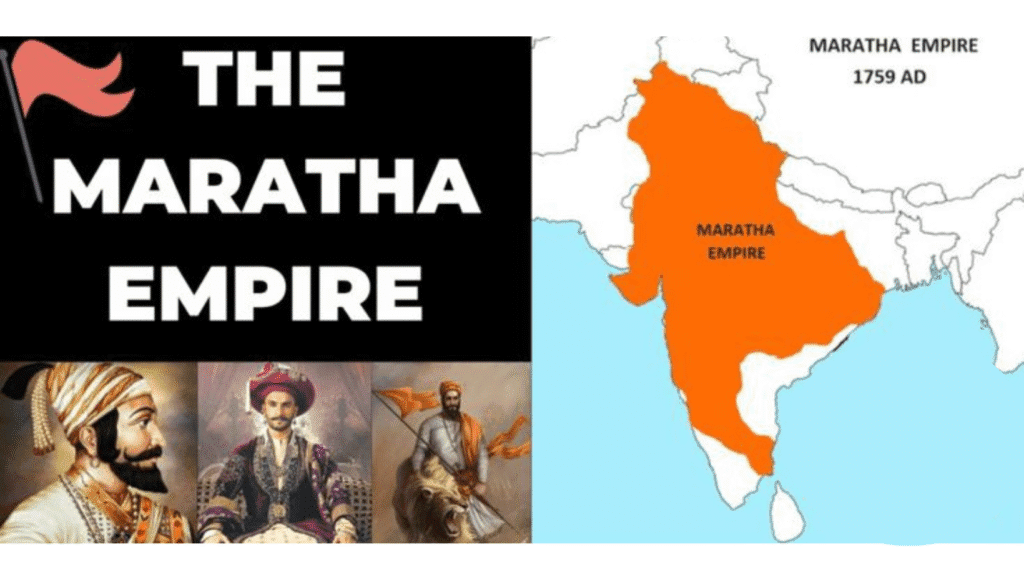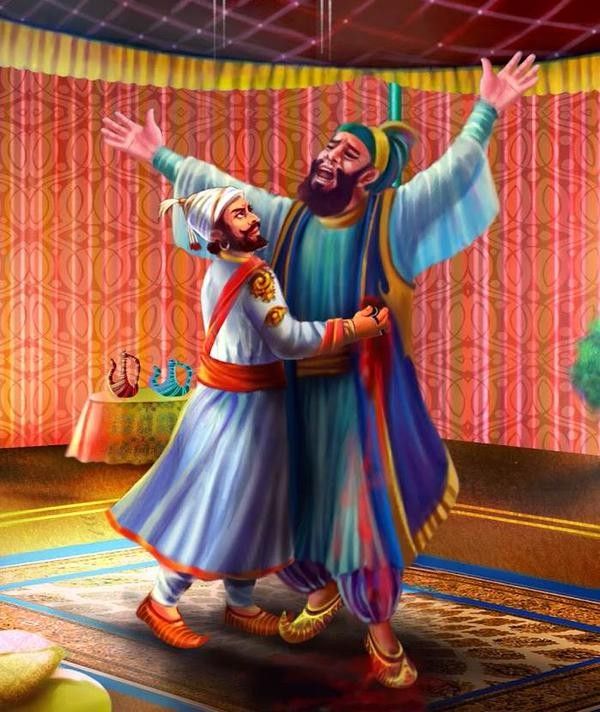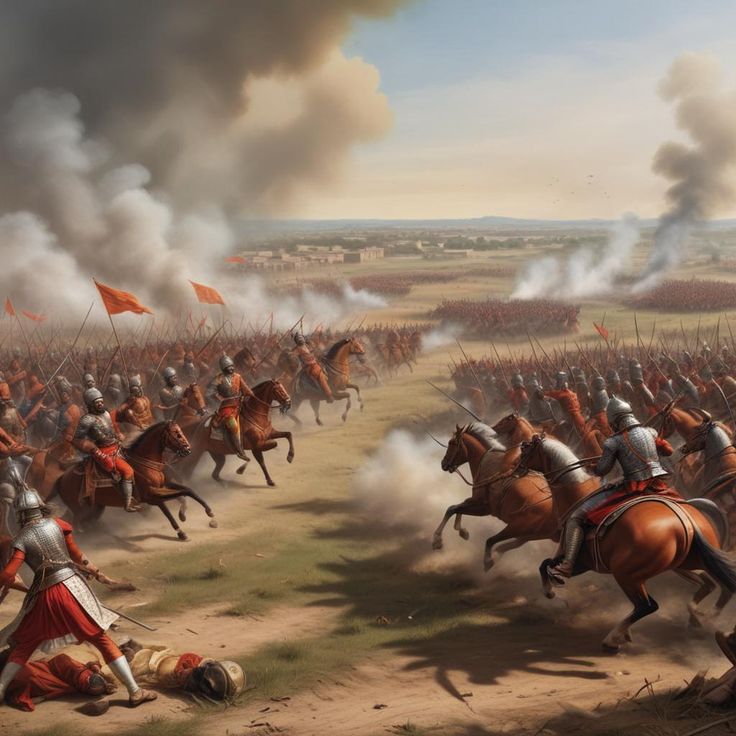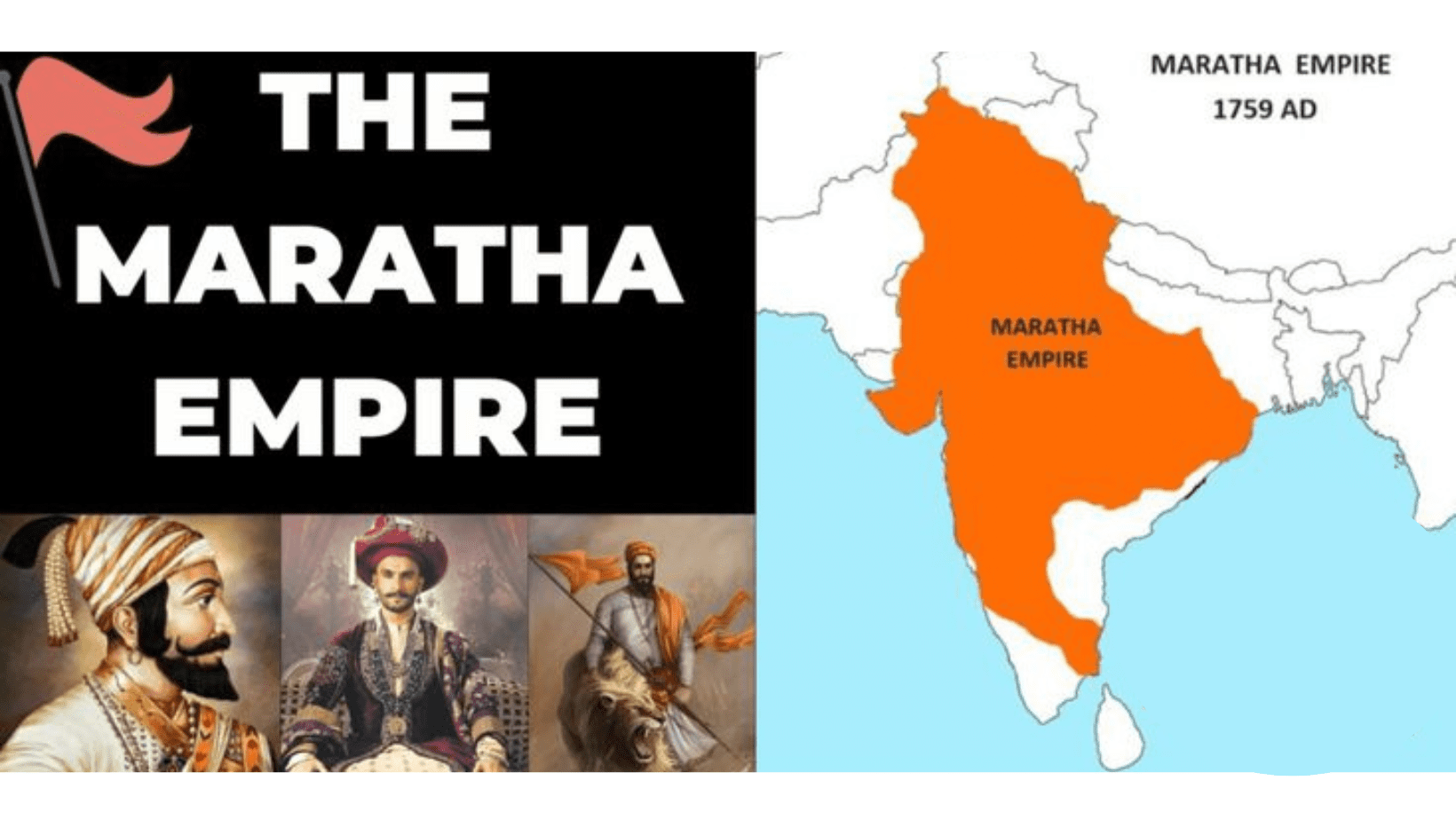
Introduction: The Rise of the Maratha Empire
Established in the 17th century by Chhatrapati Shivaji Maharaj, the Maratha Empire was crucial in combating foreign rule and determining the course of India’s history. Known for their military prowess, strategic brilliance, and unwavering spirit, the Marathas fought numerous battles that not only protected their homeland but also challenged powerful empires like the Mughals, Portuguese, and British.
This blog explores the battles that defined the Maratha Empire, showcasing their courage, tactical brilliance, and enduring legacy.
⚔️ 1. Battle of Pratapgad (1659)
- Location: Pratapgad Fort, Maharashtra
- Key Figures: Shivaji Maharaj vs. Afzal Khan (Adil Shahi General)
Significance:
This was Shivaji Maharaj’s first major military victory and a turning point in Maratha history.
What Happened:
Afzal Khan, a powerful general from the Bijapur Sultanate, was sent to capture Shivaji. Under the guise of diplomacy, he attempted to assassinate Shivaji. Prepared for betrayal, Shivaji used his “wagh nakh” (tiger claws) to defend himself and killed Afzal Khan. His army then defeated the enemy forces in a swift ambush.
Legacy:
This battle showcased Shivaji’s clever war strategies and established him as a formidable force in Deccan politics.

⚔️ 2. Battle of Kolhapur (1659)
- Location: Kolhapur, Maharashtra
- Key Figures: Shivaji Maharaj vs. Rustam Zaman
Significance:
A follow-up to the Pratapgad victory, this battle further crushed Adil Shahi dominance.
What Happened:
Rustam Zaman led a large cavalry against Shivaji. Despite being outnumbered, Shivaji’s guerrilla tactics led to a crushing defeat of the Adil Shahi forces.
Legacy:
Enhanced the morale of Maratha soldiers and broadened Shivaji’s influence.
⚔️ 3. Battle of Surat (1664)
- Location: Surat, Gujarat
- Key Figures: Shivaji Maharaj vs. Mughal Governor of Surat
Significance:
A strategic economic assault on the affluent Mughal port city.
What Happened:
Shivaji attacked Surat, one of the richest cities under the Mughal Empire, looting its wealth to fund his growing army and administration.
Legacy:
Shivaji’s raid shocked the Mughals and demonstrated Maratha reach beyond the Deccan.
⚔️ 4. Battle of Sinhagad (1670)
- Location: Sinhagad Fort, near Pune
- Key Figures: Tanaji Malusare (Maratha Commander)
Significance:
A legendary battle remembered for unmatched bravery.
What Happened:
Tanaji scaled the steep walls of the fort using a monitor lizard (“ghorpad”) and launched a surprise night attack. Though he lost his life in battle, the fort was recaptured.
Legacy:
“Gad ala, pan Sinha gela!” (The fort is taken, but the lion is defeated.)—This statement immortalizes the courage of Tanaji.

⚔️ 5. Battle of Salher (1672)
- Location: Salher Fort, Nashik
- Key Figures: Suryaji Kakade, Moropant Pingle vs. Mughal army
Significance:
First open-field battle victory against the Mughals.
What Happened:
The Marathas, under Shivaji’s leadership, defeated a large Mughal force. Unlike earlier guerrilla attacks, this was a direct confrontation.
Legacy:
Demonstrated the Marathas’s skill in open warfare, thereby elevating their military reputation across India.
⚔️ 6. Battle of Palkhed (1728)
- Location: Palkhed, near Nashik
- Key Figures: Baji Rao I vs. Nizam-ul-Mulk
Significance:
Baji Rao’s strategic brilliance shone in this campaign.
What Happened:
Without engaging in a direct battle, Baji Rao cut off Nizam’s supply lines and surrounded him. This forced the Nizam to negotiate peace.
Legacy:
British historian Sir Jadunath Sarkar praised it as a textbook example of strategic warfare.
⚔️ 7. Battle of Bhopal (1737)
- Location: Bhopal, Madhya Pradesh
- Key Figures: Baji Rao I vs. Mughal army
Significance:
The Marathas reached the Mughal capital’s doorstep.
What Happened:
Baji Rao’s cavalry moved rapidly towards Delhi, forcing the Mughals to send an army. In Bhopal, Marathas cornered them and forced a treaty.
Legacy:
Established Maratha dominance in Northern India, signaling the decline of the Mughal Empire.
⚔️ 8. Third Battle of Panipat (1761)
- Location: Panipat, Haryana
- Key Figures: Sadashivrao Bhau vs. Ahmad Shah Abdali
Significance:
A major setback in Maratha expansion.
What Happened:
The Marathas fought valiantly against the Afghan ruler Abdali. Despite early success, poor logistics and betrayal led to massive losses.
Legacy:
Despite being a tragic loss, the Marathas regained their strength within ten years.
This battle is commemorated for its unparalleled sacrifice and patriotism.

⚔️ 9. First Anglo-Maratha War (1775–1782)
- Locations: Gujarat, Maharashtra
- Key Figures: Raghunathrao, Mahadji Shinde, British East India Company
Significance:
First major conflict with the British.
What Happened:
Internal succession issues led to British intervention. The Marathas, under Mahadji Shinde, scored key victories, including the Battle of Wadgaon.
Legacy:
The Treaty of Salbai preserved Maratha independence for the time being.
⚔️ 10. Second Anglo-Maratha War (1803–1805)
- Locations: Delhi, Assaye, Laswari
- Key Figures: Arthur Wellesley vs. Daulat Rao Scindia
Significance:
Maratha resistance wanes against modern British forces.
What Happened:
Disunited Maratha chieftains fought separately, allowing the British to defeat them one by one.
Legacy:
A major loss of territory but not complete submission.
⚔️ 11. Third Anglo-Maratha War (1817–1818)
- All over central India
- Key Figures: Peshwa Baji Rao II vs. British
Significance:
Final battle leading to the fall of the Maratha Empire.
What Happened:
The British launched an all-out attack to end Maratha resistance. The Peshwa was defeated and exiled.
Legacy:
The conclusion of Maratha sovereignty marked the onset of complete British dominance in India.
Conclusion: The Spirit Lives On
The battles that defined the Maratha Empire were more than military events—they were symbols of bravery, resistance, and identity.
From the mountainous regions of Maharashtra to the expansive fields of Panipat, Maratha fighters established a legacy characterized by valor, tactical brilliance, and selflessness.
Today, their history inspires millions across India, especially in Maharashtra, where forts, memorials, and festivals keep the Maratha spirit alive.
FAQ Section
Q1. Who was the greatest Maratha warrior?
Ans: Chhatrapati Shivaji Maharaj is widely regarded as the greatest Maratha warrior due to his leadership, strategy, and vision.
Q2. Which was the most significant Maratha battle?
Ans: The Battle of Panipat (1761) was one of the most significant battles; although it ended in defeat, it demonstrated the scale and power of the Maratha Empire.
Q3. Did the Marathas ever defeat the British?
Ans: Yes, in the First Anglo-Maratha War, Marathas defeated the British at the Battle of Wadgaon.
Q4. What was unique about Maratha warfare?
Ans: Guerrilla tactics, strategic fort building, and fast cavalry were unique to Maratha warfare.

1 thought on “Battles That Defined the Maratha Empire”